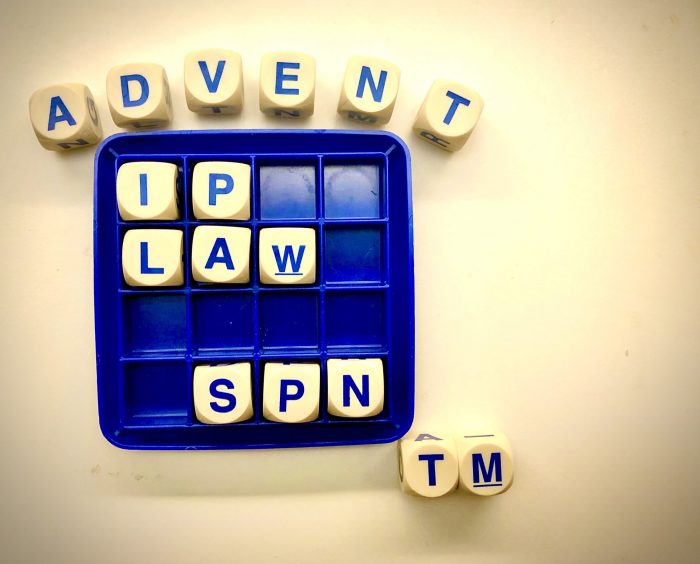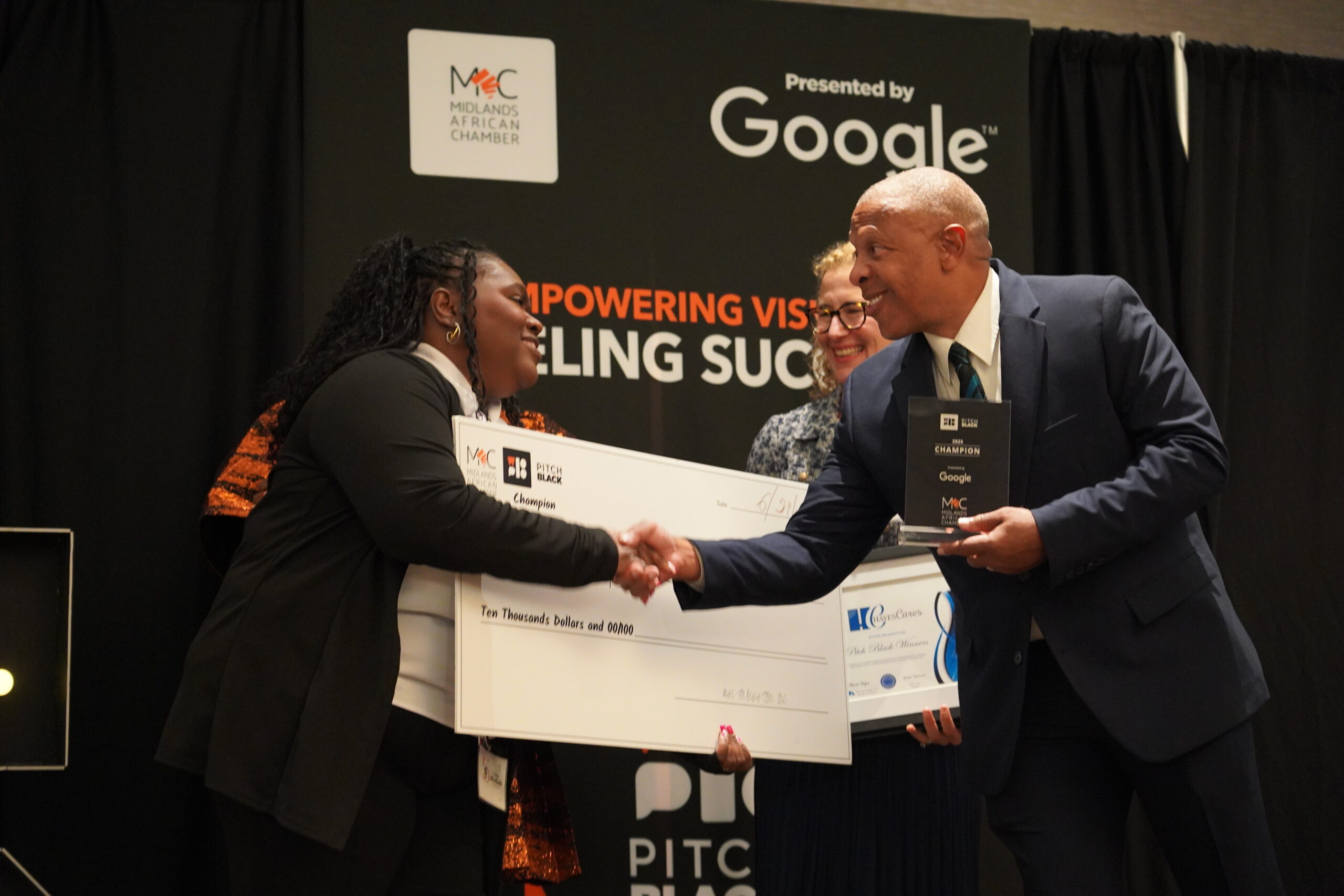From his father, Ryan Grace inherited more than a love of fishing. He caught the invention gene as well.
In 2007, Grace, the founding partner of Omaha-based Advent, LLP—an intellectual property, innovation and technology law firm with clients around the globe—teamed up with his father, Ted Grace, to come up with an invention that would help them catch more fish.
Grace used a technique that his firm Advent uses every day. He looked for “white space” in the fishing industry where no patents had been filed. Such gaps are ripe for innovation, he said.
“I realized the fishing industry was far behind, so I started looking at white space in a totally different area, of how (companies in different industries) were solving, maybe, similar problems—but not that similar—and then I could take those learnings in other industries and apply them to the fishing industry to create new inventions,” he said.
Eventually, the father-son duo devised an innovative piece of fishing technology that generated predictive analytics for fishing and could also automate the fishing boat based on those analytics. The father-son duo secured over 20 U.S. and international patents from their invention and spent a year and a half flying all over the country trying to sell their breakthrough tech.
“It was fun,” the younger Grace said of these adventures with his father. “I got to spend a lot of time in the car with my dad driving around, flying different places, talking about all kinds of things.”
The family formed a company, Grace Angling Technologies, and in 2011 sold their portfolio to GPS tech-giant Garmin in what Grace said constituted “one of the largest patent transactions in the marine electronics field.”
This is all to say that Ryan Grace knows exactly what it takes to create, patent and sell a successful invention. And his team of patent attorneys, patent agents and technology advisors at Advent are passionate about helping companies of all sizes protect their valuable work.
Eliminating the Billable Hour
Grace and Kevin West founded Advent, LLP, in 2010 with an important goal in mind: to eliminate the billable hour.
For years, the billable hour has been the bane of both attorneys and clients. Clients hate going through hundreds of issues trying to justify each 0.1 hour time increment, and attorneys stress about making each of their billable hour requirements for the firm, Grace said.
“We were the first, if not the only, (IP firm) to remove the billable hour from our metrics,” Grace said.
Instead, Advent engages with clients on a project-by-project, monthly or yearly basis. The firm built an internal software program to track the value they deliver to clients irrespective of time. These clients range from Fortune 500 companies to tiny startups.
Some of that value includes helping companies generate patentable work.
Using the same technique Grace and his father used to devise the invention he sold to Garmin, Advent uses a variety of software tools that scour global patent systems and identify white space in which companies could innovate.
“From that work, our attorneys are also inventors on over 40 U.S. and international patents, where we helped our clients innovate in a particular field,” he said.
Advent also employs in-house CAD professionals and a 3D printer for prototyping. The firm doesn’t just point out gaps for clients to consider innovating within, it actively develops and tests different designs in-house to get better intellectual property from early-stage modeling.
That’s why the members of Advent sit on multiple innovation councils and research & development teams for some of the most powerful companies in the world. They’re all intimately involved in the work they help their clients protect.
“Every one of us is deep into most technologies,” Grace said.
Innovation: the Nimble-Footed Approach
Although Advent works with some of the largest companies in the world, Grace prefers to lead a smaller, nimbler team.
“It’s been almost a business advantage to be a smaller boutique, to be very nimble, and to be able to change quickly,” he said.
Having been part of larger law firms before, Grace said he didn’t want to replicate the one-size-fits-all-approach typical of such places.
“It’s like you plug into their model,” he said. “And that can create issues when you’re trying to engage a client in doing something unique. Plus all your employees have to fit into that model, too.”
Instead, Advent operates on a model developed for maximum employee flexibility.
“We get a nice, diverse group of people with different interests and different life pressures, and they can plug into our model and be very successful,” he said.
One of Advent’s attorneys, for instance, is a talented member of the team who also runs a farm and is currently pursuing a PhD in law.
“She has interest in things that are outside our firm, and we encourage that, because our system is set up to allow that type of activity,” Grace said.
While many law firms want to grow until they hit “a magic number,” Grace said, he does not want Advent to get tangled up in the many procedural and process changes that would have to take place for such growth to happen. Things could get too rigid and take some of the fun out of IP law. Worse, the creative spark might burn a little cooler.
Grace prefers how things are now: a brilliant, creative team with diverse interests and experiences that enjoys helping clients protect their inventions while testing out new ones.
“There’s just a lot of ideas that are always flowing in our office, and it’s fun,” he said.
What the U.S. Patent Office Means by “Innovation” Is Not What Your Marketing Team Means
Obviously, words can have multiple meanings that gradually evolve based on usage patterns. Take “innovation” for instance. If we had a dime for every business that referred to itself as innovative, we’d have the financial clout to brazenly headhunt members of the Forbes Magazine staff and turn them into Silicon Prairie Newsies.
But what everyday people mean by “creativity” and “innovation” and what the U.S. Patent Office means are quite different. “New” and “inventive” aren’t quite enough.
“The standard at the patent office is that (a proposed invention) has to be new, and it can’t be obvious either,” Grace said. “And that’s where the fight really happens at the patent office. What is, or is not, obvious?”
Grace said he often has to push back on the examiners at the U.S. Patent Office, to argue why a given patent is not obvious just because some of its components can be found elsewhere.
“Let’s say your invention is really just a combination of several different things—almost every innovation builds on something else,” Grace said. “(What the patent examiner will do) is try to reject your patent over several other patents. They’ll pick and choose the features out of the other patents, and if they can put them together, almost like a puzzle, they’ll make you argue how your invention isn’t obvious.”
At that point, Grace said, Advent’s job is to convince the Patent Office that the examiner isn’t following the rules and/or is using “hindsight reconstruction”—basically reverse-engineering the solution based on insights that would not have been obvious to someone unless they were specifically trying to discredit the novelty of the proposed invention.
Or maybe the inventor has made use of a non-obvious insight from a different field, Grace continued. It would be harder for the U.S. patent examiner to call a proposed invention obvious if it included a piece of technology not normally used in the field, such as an invention that applied a type of cell phone technology to fishing-boat depth finders.
“The examiner would have a hard time arguing that such an invention was obvious, because somebody with ordinary skill in the art of dealing with depth finders probably isn’t thinking about cell phone technology,” he said.
(Unless, of course, you’ve trained yourself to think like an inventor, for whom the borders of knowledge are porous and less rigid than we might think at first. For instance, just 30 years ago, telephone, camera, and computer were all very different industries attuned to different audiences. No one would’ve thought to put those together, even though it seems obvious now.)
So, for those readers working on a potential piece of intellectual property, it might be a good idea to engage the services of an IP firm before trying to take on the U.S. patent bosses.
Building the Next Generation of Innovative Technologists at Home
Not everyone is lucky enough to have a father like Ted Grace, someone who can spark curiosity and a problem-solving mindset. And many kids lack access to technology and the STEM experiences that could inspire them to pursue technical careers.
The need to cultivate a tech-savvy workforce is one of the reasons Advent supports the AIM Institute, a nonprofit that is building the tech community in Omaha. In addition to the professional development and industry events that AIM facilitates for current tech professionals, AIM also helps build the next generation of tech talent by providing free, hands-on tech education—including 3D printing, CAD designing, coding and more—to youth who would not otherwise have the chance to take part.
“Even though a lot of our clients are not local, we want to do what’s right in the community, too,” Grace said.
Eliminating the billable hour, making IP law a healthier option for workers and clients alike, and helping people protect their new, non-obvious inventions? That’s a pretty big fish. Good thing Advent’s skilled and flexible enough to catch it.
—
This is a sponsored post paid for by Advent, LLP. It was written by Tom McCauley of Silicon Prairie News and the AIM Institute.




